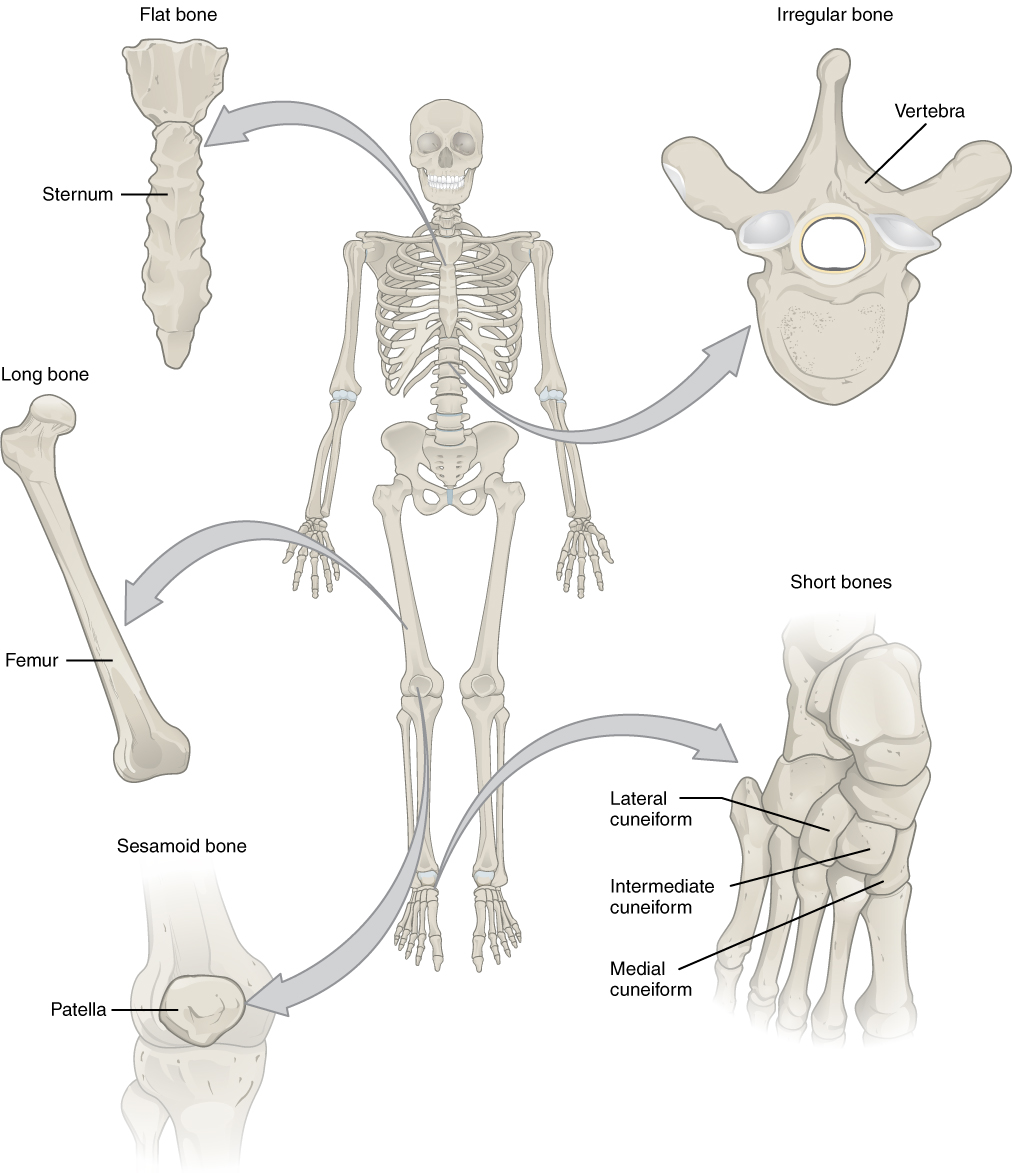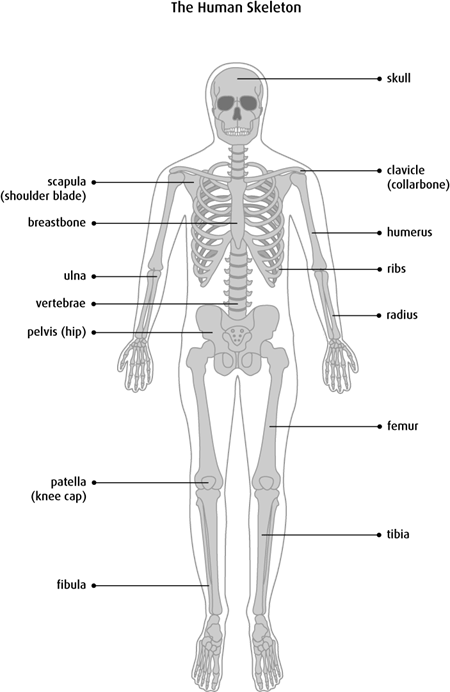Bones Are Not Involved in Which of the Following
Which of the following bones is not found in the leg a. Each year an average of 6 million people in the United States will break a bone.

Bone Classification Anatomy And Physiology
Which of the following is not involved in forming the shape of the facea.

. It also serves as a site of attachment for ligaments and tendons. Bones are the structural blocks of the human body. Individual bones of the skull in the newborn are separated by connective tissue regions called.
And if youre familiar with some just general medical or anatomical terminology nasal means pertaining to the nose. Facial bones are different than any other body bones. Bones are not a static tissue but need to be constantly maintained and remodeled.
The cartilage serves as a shock absorber between bones. Structure of Skeletal Muscle. So essentially what bones are not involved in the face or even in the skull for that matter.
Stimulates the release of calcitonin by the thyroid gland. So we have to recognize the different answer options and where we find each one. Which of the following is the membrane that lines the medullary cavity of a long bone.
Increase the activity of osteoclasts. Divisions of the Skeleton. Structure of Bone Tissue.
Which of the following does not contribute to the nasal septum. Sulfur This problem has been solved. This is the fibrous covering on the surface of bone that is involved in thickening of the bone.
Which of the following is a function of Vitamin D. By the sixth or seventh week of embryonic life the actual process of bone development ossification osteogenesis begins. Which is not involved in the process of bone repair following a fracture.
Bone and cartilage are the two tissue of the skeletal system. These are responsible for making new bone. Solutions for Chapter 12 Problem 5TY.
The facial bone most involved in the formation of the hard palate is the. C Bones recycle damaged blood cells. A fibrocartilaginous callus serves as a model for new bone growth.
This accounts for 16 of all musculoskeletal injuries and more than 35 million emergency department visits 1In fact the average citizen in a developed country can expect to sustain two fractures over the course of his or her lifetime. Involved in bone growth repair and development. In the early stages of embryonic development the embryos skeleton consists of fibrous membranes and hyaline cartilage.
Add your answer. E A B and C are correct. Vomer bone palatine bone hyaline cartilage ethmoid bone.
Connected to the bones by tendons muscles move those bones in several ways. Osteoclasts remove excess bone from the hard callus D. The elbow in essence is a joint formed by the union of three major bones supported by ligaments.
This is secreted by the C-cells in the thyroid gland. The bones that. It acts on bone and the kidney to reduce the blood calcium level.
During adulthood which of the following does NOT significantly contribute to bone remodeling and growth. QUESTION 82 Which of the following minerals is not involved in the formation of bone. A membrane that surrounds the surface of a bone.
The fracture hematoma reorganizes to form a procallus D. It reduces the reabsorption of calcium from bones and inhibits reabsorption of calcium by the renal tubules. A The bones make red blood cells.
There are two osteogenic pathwaysintramembranous ossification and endochondral ossificationbut in the end. Option A is nasal bones. There are three main cell types involved in this process.
A parathyroid hormones b vitamin d c epinephrine. Axial Skeleton 80 bones Appendicular Skeleton 126 bones Articulations. A periosteum b endosteum c marrow d epiphysis 4 metaphysis.
B Calcitonin is a hypocalcemic hormone. A diaphysis B periosteum C endosteum D metaphysis E epiphysis 4. All of the above.
Stimulates the release of PTH from the parathyroid glands. Fibroblasts produce collagen fibers to connect broken pieces of bone. A layer of cartilage that covers the ends of a long bone.
Regulates the livers reabsorption of calcium. Bone Development. B Some bones house hemopoietic tissue that makes blood cells.
It is composed of 2 layers. D A and B are correct.

The Bones Canadian Cancer Society

A Protein Called Pcaf Promotes Key Regeneration Associated Genes Following Peripheral But Not Central Nerve Injury Which Ultimately Allows Marc Spina


Comments
Post a Comment